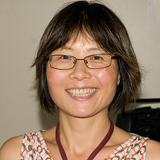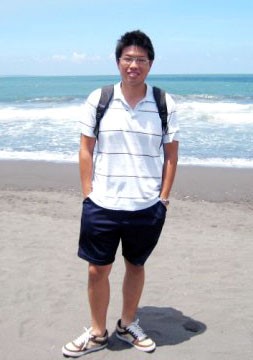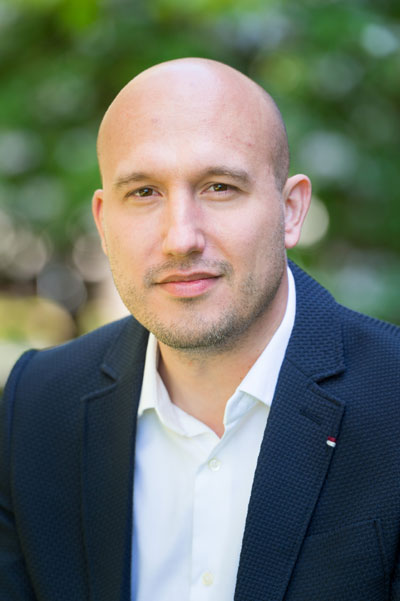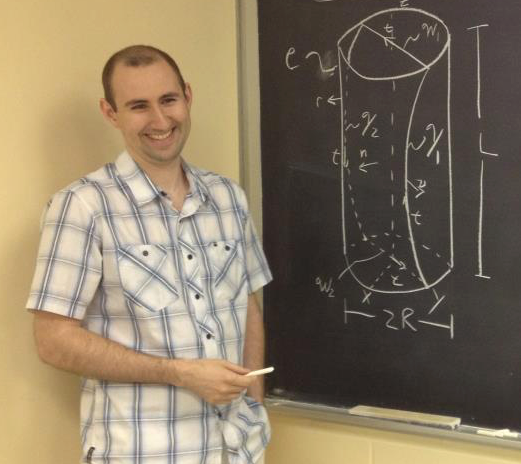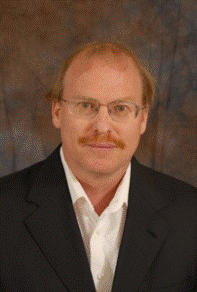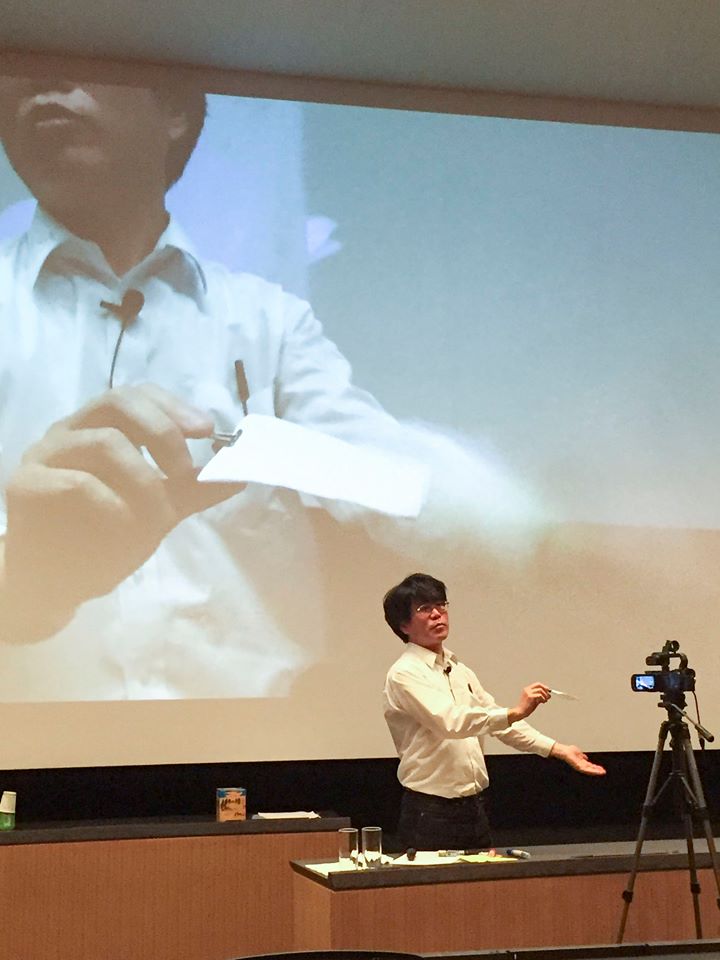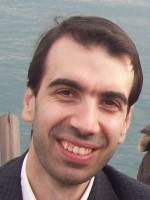FY2015 Annual Report
Mathematical Soft Matter Unit
Professor Eliot Fried
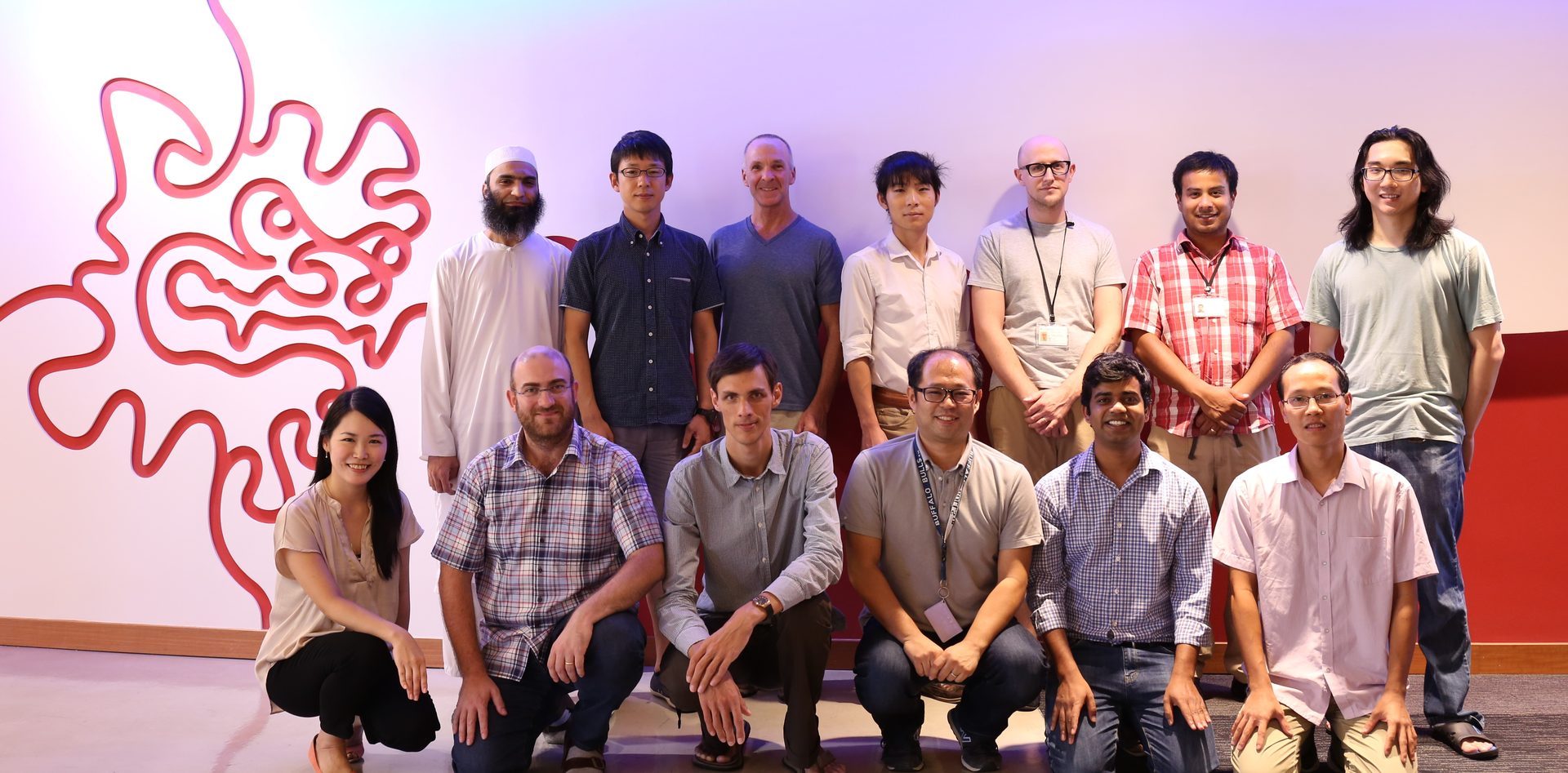
Abstract
FY2015 has been a year of significant growth for the MSM unit. Three postdoctoral scholars (Wei Chung Chen, Giulio Giusteri, and Tuan Hoang), a technician (David Vasquez Cortes), and a graduate student (Vincent Pak Too Chen) joined the unit. Additionally, the unit laboratory was fully operational and generating experimental data less than six months after the opening of Lab 3 in Summer of 2015. Moreover, a microwave chemical vapor deposition system for growing diamond films was delivered, installed, and working before the end of the fiscal year.
Scientifically, activity within the unit focused on a broad spectrum of topics, including but not limited to (i) developing accurate and efficient numerical methods for approximating solutions to problems involving the minimization of energy functionals which incorporate competition between surface and boundary contributions, (ii) performing simulations of defect and microstructure evolution in two-dimensionally confined mixtures of magnetic and nonmagnetic colloids, (iii) determining the influence of spanning liquid films on the stability and bifurcation behavior of closed loops made from filaments with anisotropic cross sections, (iv) using molecular dynamics simulations to determine equilibrium shapes of Möbius bands made from graphene, (v) theoretical and experimental investigations of Leidenfrost-type effects resulting from depositing cold liquid droplets on warm liquid surfaces, (vi) analyzing the stability of one- and two-dimensional structures mades from magnetic balls, and (vii) developing a theoretical framework for studying the mechanics of unstretchable two-dimensional media like paper and graphene.
Members of the MSM unit published 13 peer-reviewed journal articles and 4 English translations of seminal articles, originally written in German, on the energetics of Möbius bands. Members of the unit also actively communicated the findings of their investigations, giving 12 invited talks at other universities and 12 invited talks at international and national conferences and workshops.
The MSM unit hosted 19 research seminars from 17 visitors who spoke topics in classical and quantum mechanics, biophysics, materials science, geometry, applied mathematics, and numerical methods. The unit also initiated and played a central role in the visit of Professor Tadashi Tokieda of Cambridge University, who gave 2 presentations that widely attended by the OIST community.
Additionally, the unit hosted a minisymposium on the mathematical analysis and modeling of protein cages.
1. Staff
As of March 31, 2016
- Dr. Eliot Fried, Professor
- Dr. Ryohei Seto, Group Leader
- Dr. Wei Chung Chen, Postdoctoral Scholar
- Dr. Giulio Giusteri, Postdoctoral Scholar
- Dr. Tuan Hoang, Postdoctoral Scholar
- Dr. Stoffel Janssens, Postdoctoral Scholar
- Dr. Abdul Majid, Postdoctoral Scholar
- Dr. Johannes Schoenke, Postdoctoral Scholar
- Dr. Yoichi Takato, Postdoctoral Scholar
- Dr. David Vazquez Cortes, Technician
- Mr. Pak Too Chan, Graduate Student
- Mr. Vikash Chaurasia, Research Intern
- Ms. Naoko Tokumoto, Research Administrator
Alumni
- Dr. Russell Todres, Staff Scientist
- Mr. Paolo Franceschini, Research Intern
- Mr. Adam Stones, Research Intern
- Ms. Agnes Oshiro, Research Administrator
2. Collaborations
- Theme: Unstretchable two-dimensional materials Type of collaboration: Joint research
Researchers:
Professor Yi-Chao Chen, University of Houston, Houston, TX, USA
- Theme: Facture networks in particulate systems Type of collaboration: Joint research
Researchers:
Professor John E. Dolbow, Duke University, Durham, NC, USA Yingjie Liu, Duke University, Durham, NC, USA Professor Mahesh Bandi, OIST, Okinawa, Japan Aryesh Mukherjee, OIST, Okinawa, Japan
- Theme: Upscaling of self-motile suspensions by spatial averaging Type of collaboration: Joint research
Researchers:
Dr. Denis F. Hinz, Kamstrup A/S, Skanderborg, Denmark Professor Alexander Panchenko, Washington State University, Pullman, WA, USA
- Theme: Simulation of wind-driven ocean circulation Type of collaboration: Joint research
Researchers:
Professor Luca Heltai, International School for Advanced Studies, Trieste, Italy Dr. Wen Jiang, Fuels Modeling and Simulation, Idaho National Laboratory, Idaho Falls, ID, USA Professor Tae-Yeon Kim, Khalifa University of Science, Technology and Research, Abu Dhabi, UAE Dr. Nella Rotundo, Weierstraß-Institut, Berlin, Germany
- Theme: Two-dimensional crystal formation in magnetic colloids Type of collaboration: Joint research
Researchers:
Professor Benjamin Yellen, Duke University, Durham, NC, USA An Pham, Duke University, Durham, NC, USA Dr. Ryohei Seto, OIST, Okinawa, Japan
3. Activities and Findings
3.1 Möbius bands, unstretchable material sheets, and developable surfaces
Sheets of photocopy paper and graphene bend easily but are difficult to stretch. When modeling such sheets, it is common to neglect their thickness and to assume that they cannot stretch. With these idealizations, a bent sheet must be a developable surface. In this work, we show that a prescribed rectangular region can be mapped into a developable surface with stretching. Thus, when determining the shape of a curved ribbon or Möbius band made from a rectangular strip of paper it is misguided to work within the class of developable surfaces. Instead, it is necessary to impose a constraint that rules out stretching.
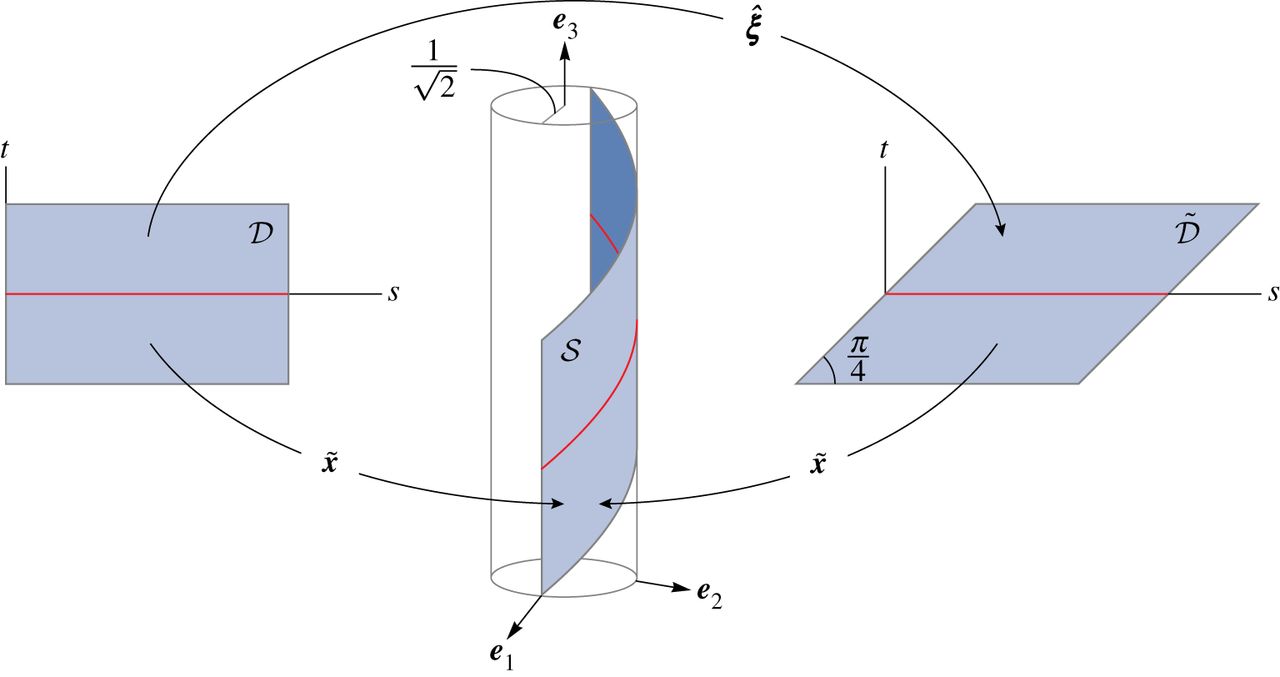
This work was published in Proceedings of the Royal Society of London Series A, Mathematical, Physical and Engineering Sciences (doi:10.1098/rspa.2016.0459)
3.2 Stability and reshaping of elastic loops spanned by liquid films
We studied the interplay between the elastic properties of a filament, closed to form a simple loop, and those of a liquid film that spans such a loop. We were particularly interested in understanding the relation between thet bending and torsional rigidities of the filament and the dominant shape deformations induced by the action of surface tension, which is a characteristic of the liquid film.
We derived in full generality the equations that describe the equilibrium configurations of a liquid film with an elastic boundary formed by a simple loop and the inequalities that encode the stability properties of such equilibria, after which we applied those results to the analysis of the stability of planar circular configurations of the system.
Experimental observations involving polypropylene loops spanned by a soap film evidenced that the presence of intrinsic curvature of the filament and the shape of its cross-sections strongly affect the deformation induced by the presence of the soap film (Figure 2.1).

Figure 2.1: Intrinsic shape (a) of the circular arcs used to make the loops spanned by the soap film in the systems producing the buckled shapes (b, c), photographed from two orthogonal directions.
On this basis, we established a quantitative link between those features and the form of the perturbation which is amplified during a dynamic destabilization of the flat circular configuration. When the surface tension of the film is large enough compared to the stiffness of the filament, the shape of the cross-sections and the intrinsic curvature select which combination of three basic perturbations (Figure 2.2) is amplified, driving the system towards different equilibrium configurations.
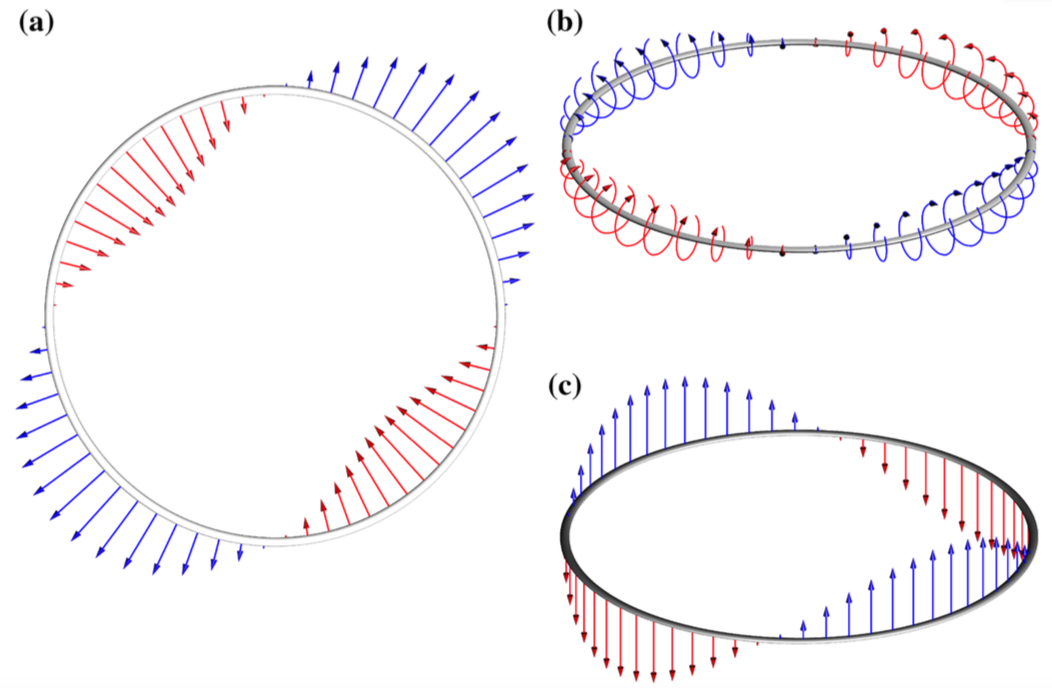
Figure 2.2: (a) In-plane perturbation; (b) Twisting perturbation; (c) Out-of-plane perturbation.
This research provides important directions for the design of structures with improved stability with respect to particular mechanical perturbations and would also be essential in designing microstructures that can be dynamically reshaped by exploiting surface tension effects at liquid interfaces.
This work was published in Journal of Nonlinear Science (doi:10.1007/s00332-016-9299-4).
3.3 Influence of material stretchability on the equilibrium shape of a Möbius band
Topology often plays an important role as well as geometry in physical properties of twisted materials. A Möbius band with one-sided topology can be obtained by twisting a rectangular strip about its long axis by 180 degrees and joining its short ends. Hydrocarbon based Möbius molecules have recently been synthesized and niobium triselenide Möbius crystals have recently been grown. A strategic guide to obtaining target shapes for nano or micron scale Möbius bands of a given material is, therefore, becoming important. Möbius bands created by unstretchable thin materials like paper were analytically or numerically studied, and the upper bounds of their bending energy were obtained. However, the problem of determining the shapes of Möbius bands made of stretchable materials and the associated energies has not been tackled previously.
In this project, we numerically explored the equilibrium shapes of energetically favored Möbius bands made of stretchable materials. Möbius bands adopt characteristic shapes that differ depending on material stretchability (see Fig. 3.1). For unstretchable materials, Möbius bands have a kink around which the bending strain is highly localized. For stretchable materials like rubber, on the other hand, the midline of a Möbius band takes a nearly planar and circular shape and, hence, the bending strain is delocalized. Our results (see Fig. 3.2) suggest that the work required to form a Möbius band from a rectangular sheet should decrease with the stretchability of the sheet. The stretchability-dependent energy also provides characteristic shapes and strategies for assembly and synthesis of Möbius molecules and other nanoscale twisted topologies.

Figure 3.1: Equilibrium shapes of Möbius bands of length-to-width aspect ratio a = 4π. The right most Möbius band is made of a material in the unstretchable limit γ → ∞.

Figure 3.2: Bending energy Ψ of Möbius bands of length-to-width aspect ratio a vs. material stetchability. As a material becomes stretchable, the bending energy monotonically decreases. This means that the sheet is easy to bend and twist if a material is more stretchable.
This work was published in Soft Matter (doi:10.1039/c5sm02188j).
3.4 Error analysis of models for large-scale wind-driven ocean circulation
This effort focused on deriving optimal error estimates for h-refinement of the Nitsche-type finite-element formulations introduced in our previously published work on the Stommel and Stommel--Munk models for large scale wind-driven ocean circulation. In contrast to the standard conforming finite-element formulations, these formulations involve additional terms to weakly enforce Dirichlet boundary conditions along with stabilization terms. Our analysis established the optimal convergence rates of k + 1 in the L²-norm, k in the H¹-norm, and k – 1 in the H²-norm for k-th-order non-interpolatory polynomial basis functions. Variational formulations of this kind involve stabilization parameters which influence both convergence rates and the numerical accuracy. We previously introduced such parameters without proving their error properties and estimated them by solving local eigenvalue problems on the Dirichlet boundaries. The estimates obtained in this paper establish the robustness of these formulations and allow the selection of the stabilization parameters without solving additional difficulty.
Figure 4: Streamlines obtained from the Stommel model for a mesh spacing h = 1/64.
These results were published in Journal of Scientific Computing (doi:10.1007/s10915-016-0201-1).
3.5 Influence of a spanning liquid film on the stability and buckling of a circular loop
In this work we use a variational approach to study a system consisting of a flexible but inextensible loop spanned by a liquid film. Distinct from previous efforts, we consider loops made from filaments with intrinsic curvature and/or intrinsic twist density. As in previous efforts, our analysis focuses on the stability and bifurcation behavior of flat circular configurations of the system. Two highlights of our results are:
- For loops made from filaments with both intrinsic curvature and intrinsic twist density, the system undergoes a stable bifurcation to a shape in which in-plane and out-of-plane modes are coupled and this occurs at a critical value of the dimensionless surface tension of the liquid film less than that arising for loops made from filaments with no intrinsic curvature and no intrinsic twist density.
- In addition to showing how our results specialize for loops made from filaments with rectilinear rest configurations, we discuss how our results specialize in the absence of a spanning film and, thus, to the literature concerned with the stability and buckling behavior of elastic rings. Representative results for a filament with intrinsic curvature but no intrinsic twist density are illustrated in Figure 5.

Figure 5: Illustration of the separation between planar but noncircular and nonplanar buckling regions for combinations of twist-to-bend ratio c/a and the dimensionless intrinsic curvature Rκ0 for a filament with intrinsic curvature but no intrinsic twist density. While c and a are the twisting and bending rigidities respectively, R is the radius of the loop, κ0 is a intrinsic curvature of the filament from which the loop is made, and σ is the surface tension of the liquid film that spans the loop.
These results were published in Mathematics and Mechanics of Solids (doi:10.1177/1081286516666135).
3.6 Optimal conditions for energy transport in light-harvesting complexes and devices
The first stages of photosynthesis take place within the light-harvesting complexes constituted by aggregates of chlorophyll molecules in cells. the main task of such complexes is to funnel solar energy towards the reaction centers where conversion and storage take place. Two seemingly incompatible features characterize these complexes: the nanometric dimensions of these natural optical devices make quantum effects of paramount importance, while the degree of disorder and thermal disturbances, which would normally hinder quantum effects, is relatively high.
We establish what are the optimal conditions in which the competition between coherent quantum effects and structural disorder can become helpful in sustaining the transport properties of a simple model for light-harvesting complexes.
We analyze a model that captures the essential structural features of the natural systems. These are (i) the energy gap δERC between the state excited by an absorbed photon and the gateway state towards the dissipation channel and (ii) the standard deviation W´ of an effective coupling with the dissipation channel (that funnels the energy towards the reaction center) induced by random structural fluctuations.
To provide analytical predictions about the behavior of the system, we mapped the random structure into a deterministic one by associating the deterministic coupling X with the statistical quantity W´. Such a reduction is remarkably effective in reproducing the dependence of the transport efficiency on the system parameters (Figure 6), giving good estimates for the conditions in which transport is optimized.
Our analysis not only provides a basic step in understanding the links between structure and function of natural complexes, but also elucidates important principles that could be exploited to design quantum devices that can operate in the presence of disorder and thermal disturbances.

Figure 6: The dependence of the energy transfer efficiency (color-coded) on the structural system parameters in the reduced deterministic model (a) is in very good agreement with that of the stochastic model (b). This provides a means to give analytical estimates (dashed lines and blue cross) of the regions in which the efficiency is locally or globally optimal
This work was published in Physical Review E (doi:10.1103/PhysRevE.93.032136).
3.7 Crystallization kinetics of binary colloidal monolayers
On cooling, a liquid transforms into a solid. If the cooling rate is finite, such a solid need not be a single crystal but rather is most often a polycrystal or an amorphous material called a glass. Since properties of polycrystals are significantly affected by the microstructural arrangement of their crystallites, we are interested in understanding how the crystallization process can be controlled to obtain certain desired microstructures. To tackle this problem, we studied a colloidal dispersion instead of an atomic or molecular system. The thermodynamic behavior of spherical colloids is in some sense similar to that of a collection of atomic particles; a colloidal dispersion is expected to reach thermal equilibrium after a long time. Since colloidal particles are much heavier than molecules, the relaxation in response to thermal fluctuations is sufficiently slow to be observed in real time with optical microscopy.
Temperature, which is a key variable to control phase behavior, has a restricted range for colloidal dispersions. However, we can introduce an effective temperature for a specific colloidal dispersion, namely a binary monolayer system of paramagnetic and nonmagnetic colloidal particles dispersed in a ferrofluid, with intercolloidal forces being controlled with applied magnetic fields. In this setting, the effective temperature of the system is given by the relative strength of the thermal fluctuation to the magnetic dipole forces. Thus, in particular, a rapid quenching process can be mimicked by changing the applied magnetic field. Although a checkerboard lattice is preferred under a vertical magnetic field, grain boundaries are observed to formation in this rapid quenching process.
Simulations were used to evaluate the impact of impurities on crystallization. We compared experimental observations with simulations by introducing certain measures to characterize the polycrystalline structure. We found that the simulation results agree very well with experimental measurements made with collaborators in the Yellen laboratory at Duke University very if a certain amount of impurities are included in the simulations.
Figure 7: Polycrystalline domains formed in experiments (a) and simulations (b) at different effective temperatures. Crystallites are colored according to local orientations of particles. Black coloration is used to depict the regions where particles do not form crystalline structures. The scale bars are of length 50 mm.
This work was published in Soft Matter (doi:10.1039/c6sm01072e).
4. Publications
4.1 Journals
- G. G. Giusteri, G. L. Celardo, F. Borgonovi. Optimal efficiency of quantum transport in a disordered trimer, Physical Review E 93 (2016), (doi: 10.1103/PhysRevE.93.032136)
- D. M. Kleiman, D. F. Hinz, Y. Takato, E. Fried. Influence of material stretchability on the equilibrium shape of a Möbius band, Soft Matter 12 (2016), 3750–3759. (doi:10.1039/c5sm02188j)
- J. Schönke, Smooth Teeth: Why Multipoles Are Perfect Gears, Physical Review Applied 4 (2015), 064007. (doi: 10.1103/PhysRevApplied.4.064007)
- T.-Y. Kim, A. A. Dunca, L. G. Rebholz, E. Fried. Energy analysis and improved regularity estimates for multiscale deconvolution models of incompressible flows, Mathematical Methods in the Applied Sciences 38 (2015), 4199–4209. (doi:10.1002/mma.3358)
- R. Mari, R. Seto, J. F. Morris, M. M. Denn. Discontinuous shear thickening in Brownian suspensions by dynamic simulation, PNAS 112 (2015), 15326-15330 (doi: 10.1073/pnas.1515477112)
- D. F. Hinz, T.-Y. Kim, A. Panchenko, E. Fried. Particle-based simulations of self-motile suspensions, Computer Physics Communications 196 (2015), 45–57. (doi:10.1016/j.cpc.2015.05.014)
- B. Seguin, E. Fried. Stable and unstable helices: soap films in cylindrical tubes, Calculus of Variations and Partial Differential Equations 54 (2015), 969–988. (doi:10.1007/s00526-014-0813-y)
- A. Biria, E. Fried. Theoretical and experimental study of the stability of a soap film spanning a flexible loop, International Journal of Engineering Science 94 (2015), 86–102. (doi:10.1016/j.ijengsci.2015.05.002)
- R. Mari, R. Seto, J.F. Morris, M.M. Denn. Nonmonotonic flow curves of shear thickening suspensions, Physical Review E 91 (2015), 052302, (doi: 10.1103/PhysRevE.91.052302)
- E. Fried, M. E. Jabbour. Sessile drops: spreading versus evaporation-condensation, Zeitschift für angewandte Mathematik und Physik 66 (2015), 1037–1059. (doi:10.1007/s00033-014-0424-7)
- Y.-C. Chen, R. Fosdick, E. Fried. Representation for a smooth isometric mapping from a connected planar domain to a surface, Journal of Elasticity 119 (2015), 335–350. (doi:10.1007/s10659-015-9521-x)
- N. Kirby, E. Fried. Γ-limit of a model for the elastic energy of an inextensible ribbon, Journal of Elasticity 119 (2015), 35–47. (doi:10.1007/s10659-014-9475-4)
- T.-Y. Kim, T. Iliescu, E. Fried. B-spline based finite-element method for the stationary quasi-geostrophic equations of the ocean, Computer Methods in Applied Mechanics and Engineering 286 (2015), 168–191. (doi:10.1016/j.cma.2014.12.024)
4.2 Books and other one-time publications
Translations
- R. E. Todres. Translation of W. Wunderlich’s "On a Developable Möbius Band". Journal of Elasticity 119 (2015) 23–34. (doi: 10.1007/s10659-014-9489-y)
- D. F. Hinz, E. Fried. Translation of Michael Sadowsky's Paper "The differential equations of the Möbius band," Journal of Elasticity 119 (2015), 19–22. (doi:10.1007/s10659-014-9491-4)
- D. F. Hinz, E. Fried. Translation and Interpretation of Michael Sadowsky's Paper "Theory of elastically bendable inextensible bands with applications to the Möbius band," Journal of Elasticity 119 (2015), 7–17. (doi:10.1007/s10659-014-9492-3)
- D. F. Hinz, E. Fried. Translation of Michael Sadowsky's Paper "An elementary proof for the existence of a developable Möbius band and the attribution of the geometric problem to a variational problem," Journal of Elasticity 119 (2015), 3–6. (doi:10.1007/s10659-014-9490-5)
Books edited
- R. Fosdick, E. Fried. The Mechanics of Ribbons and Möbius bands. Springer, 2016. (ISBN: 978-94-017-7300-3)
4.3 Oral and Poster Presentations
- Fried, E. "Stability and bifurcation of a flexible loop spanned by a fluid film", Department of Mathematics, University of Hawaii, USA (2015).
- Seto, R., Mari, R., Morris, J.F., Denn, M.M., "Discontinuous shear thickening and flow-induced jamming", SoftComp Topical Workshop: Dense Suspension Flow, University of Edinburgh, UK (2015).
- Seto, R., Mari, R., Morris, J.F., Denn, M.M., "Granular contacts in colloidal suspensions", Engineering Mechanics Institute Conference (EMI) 2015, Stanford University, USA (2015).
- Seto, R., Fried, E., Mari, R., Morris, J.F., Denn, M.M., "How shear thickening fluid flows?", Autumn Meeting of JPS (The Physical Society of Japan), Kansai University, Japan (2015).
- Seto, R., Fried, E., Mari, R., Morris, J.F., Denn, M.M., "コロイド分散系のシアシックニング (Shear thickening fluid flows)", Tokyo University (Kashiwa-city), Japan (2015).
- Seto, R., Schonke, J., Fried, E., Yellen, B.B., "磁性コロイド単一層の結晶粒界 (Magnetic Binary Colloidal Monolayer subject to External Magnetic Field)", Tokyo University (Kashiwa-city), Japan (2015).
- Seto, R., Shoenke, J., Fried, E., Yellen, B.B., "Magnetic Binary Colloidal Monolayer subject to External Magnetic Field", International Symposium on Rheology, Kobe University, Japan (2015).
- Fried, E. "Shape transitions in some systems involving line and surface energy", Department of Mathematics, Texas A&M University, USA (2015).
- Seto, R., Pham, A., Schonke, J., Yellen, B.B., Fried, E., "Colloidal Crystallization in Magnetic Binary Monolayers", 6th Computational Statistical Physics, Nagoya, Japan (2015).
- Fried, E. "Shape transitions in some systems involving line and surface energy", Osaka City University Advanced Mathematical Institute, Japan (2015)
- Fried, E. "Kinematics and energetics of unstretchable two-dimensiona elastic bodies", Osaka City University Advanced Mathematical Institute, Japan (2015)
- Fried, E. "Shape transitions in systems involving line and surface energy", the National Center for Theoretical Science in the information, National Taiwan University, Taiwan (2015)
- Fried, E. "Dimensionally reduced energy of a Mobius band made from an unstretchable but sheet", the National Center for Theoretical Science in the information, National Taiwan University, Taiwan (2015)
- Fried, E. "Sharp-interface limits of diffuse-interface theories for phase transitions", The Mathematics of Layers and Interfaces, Banff International Research Station, Casa Matematica Oaxaca, Mexico (2015)
- Fried, E. "Stability of discoidal high-density lipoprotein particles", Department of Bioengineering, Rice University, USA (2015).
- Fried, E. "Stability of ground states for problems involving competing line and surface energies", Department of Mathematics, University of California, Berkeley, USA (2015).
- Fried, E. "Shape transitions in systems involving line and surface energy", Program in Applied Mathematics, University of Arizona, USA (2015)
- Fried, E. "Unstretchable Two-Dimensional Elastic Bodies: Kinematics and Energetics", SIAM Conference on Analysis of Partial Differential Equations, Scottsdale, USA (2015).
- Seto, R., Mari, R., Morris, J.F., Denn, M.M., Fried, E. "Connections between the shear thickening and jamming of colloidal suspensions", Plasticity 2016, Kona, Hawaii, USA (2016).
- Fried, E., Giusteri, G.G. "Variational problems for soap films spanning flexible loops" (Plenary Talk), Mathematical Society of Japan Spring Meeting 2016, University of Tsukuba, Japan (2016)
- Fried, E. "Kinematics and Energetics of Unstretchable Elastic Sheets", Mechanical Engineering, University of California Berkeley, USA (2016)
- Fried, E. "Kinematics and energetics of unstretchable two-dimensional elastic bodies", Physics and Mathematics of Materials: Current Insights 2016, L'Aquila, Italy (2016)
- Fried, E. "Crystallization Kinetics of Binary Colloidal Monolayers", Department of Mechanical Engineering, Center for Interdisciplinary Research in Fluids, University of California Santa Barbara, USA (2016)
- Seto, R., Mari, R., Morris, J.F., Denn, M.M., Fried, E. "A simulation study on shear thickening in wide-gap Couette geometry", Avalanches, plasticity, and nonlinear response in nonequilibrium solids, Kyoto University, Japan (2016).
5. Intellectual Property Rights and Other Specific Achievements
Nothing to report
6. Meetings and Events
6.1 Research Visits and Seminars
1. Professor Alain Goriely (University of Oxford, UK)
- Date: April 20, 2015
- Venue: OIST Campus B503
- Seminar: Left and right: The mechanics of chirality from Darwin’s perversion to Feynman’s obsession.
- Date: April 22, 2015
- Venue: OIST Campus B503
- Seminar: Old and new challenges in brain mechanics
2. Professor Salvatore Federico (The University of Calgary, Canada)
- Date: May 13, 2015
- Venue: OIST Campus C210
- Seminar: Fung-type elastic potentials in biomechanics: (missing) theory and (further) applications
3. Professor Jerry L. Bona (University of Illinois at Chicago, US)
- Date: May 19, 2015
- Venue: OIST Campus C015
- Seminar: Sand bar formation and soft beach protection
4. Professor Hongqiu Chen (The University of Memphis, US)
- Date: May 20, 2015
- Venue: OIST Campus C015
- Seminar: Initial-boundary value problems arise in practice
5. Professor Yi-Chao Chen (University of Houston, US)
- Visiting period: July 1- July 17, 2015
6. Professor Ming-Chih Lai (National Chiao Tung University, Taiwan)
- Date: August 25, 2015
- Venue: OIST Campus C015
- Seminar: Electrohydrodynamic simulations: Droplet and vesicle
7. Dr. Te-Sheng Lin (National Chiao Tung University, Taiwan)
- Date: August 26, 2015
- Venue: OIST Campus C015
- Seminar: Modelling of thin liquid films: long-wave approximation and gradient dynamics formulation
8. Professor Ngamta Thamwattana (University of Wollongong, Australia)
- Date: November 2, 2015
- Venue: OIST Campus C016
- Seminar: Mathematical modelling in nanotechnology, Vol. 1
- Date: November 4, 2015
- Venue: OIST Campus C016
- Seminar: Mathematical modelling in nanotechnology, Vol. 2
9. Dr. Barry Cox (University of Adelaide, Australia)
- Date: November 25, 2015
- Venue: OIST Campus C016
- Seminar: Folded conformations of graphene
- Date: November 26, 2015
- Venue: OIST Campus C015
- Seminar: Regular seven-membered loops with arbitrary join angle in R3
10. Professor Gwynn Elfring (The University of British Columbia, Canada)
- Date: December 15, 2015
- Venue: OIST Campus C016
- Seminar: Biolocomotion and fluid-body interactions at small scales
11. Professor Brian Seguin (Loyola University Chicago, US)
- Date: December 17, 2015
- Venue: OIST Campus C016
- Seminar: Material symmetry and periodic homogenization in linear elasticity
12. Professor Luca Celardo (Università Cattolica del Sacro Cuore, Italy)
- Date: February 8, 2016
- Venue: OIST Campus C016
- Seminar: Cooperative effects in quantum transport: Cooperative shielding
13. Professor Anil Hirani (University of Illinois at Urbana-Champaign, US)
- Date: February 22, 2016
- Venue: OIST Campus C016
- Seminar: Discretizations of exterior calculus
- Date: February 24, 2016
- Venue: OIST Campus C016
- Seminar: Discrete exterior calculus discretization of Navier–Stokes equations on surface meshes
14. Professor Rodney S. Ruoff (Ulsan National Institute of Science & Technology (UNIST), Republic of Korea)
- Date: March 22, 2016
- Venue: OIST Campus C016
- Seminar: Introduction to the CMCM and Carbon Materials for the Future
15. Professor Tadashi Tokieda
(The Director of Studies in Mathematics at Trinity Hall, Cambridge, and the PoincaréT Professor in the Department of Mathematics, Stanford)
- Date: March 23, 2016
- Venue: OIST Campus, B250
- Seminar: A world from a sheet of paper
- Date: March 24, 2016
- Venue: OIST Campus, C209
- Seminar: Chain reactions
16. Dr. Martin J. Field (Institut de Biologie Structurale, Grenoble, France)
- Date: March 28, 2016
- Venue: OIST Campus C016
- Seminar: Hybrid potential methods for the simulation of condensed phase reaction processes
17. Professor Luca Lussardi (Catholic University of Brescia, Italy)
- Date: March 29, 2016
- Venue: OIST Campus C016
- Seminar: A variational model for the shape of biomembranes
6.2 Events
6.2.1 OIST Mini Symposium, January 13 - January 15, 2016
"Mathematical Modeling and Analysis of Protein Cages"

Invited Speakers
- Paolo Cermelli, University of Torino
- Title: The disassembly of viral capsids as a case-study for the stability of systems of many interacting proteins
- Fasseli Coulibaly, Monash University
- Title: Structural analysis of in vivo-grown protein microcrystals
- Eric Dykeman, University of York
- Title: The multiple roles of viral RNA packaging signals and their consequences capsid assembly and evolution
- Guang Hu, Soochow University
- Title: From mathematics in DNA cage to dynamics in protein cage
- Giuliana Indelicato, University of Torino
- Title: Graph-theoretical methods for the structural characterization of self-assembling nanoparticles
- William Klug, University of California, Los Angeles
- Title: Rational mechanics of viral shells: Is elasticity theory a stretch?
- Farrah Sadre-Marandi, Ohio State University
- Title: Lattice structures of viral capsids
- Koya Shimokawa, Saitama University
- Title: Knots and links in the simple cubic lattice
- Meera Sitharam, University of Florida
- Title: EASAL: efficient atlasing, search and analysis of assembly landscapes under short-ranged potentials using geometrization, stratification and Cayley convexification
- Roya Zandi, University of California, Riverside
- Title: The robust assembly of small symmetric nanoshells
Organizers
- Eliot Fried
- Chandrajit Bajaj, University of Texas at Austin
- Title: Generating highly symmetric and congruently tiled cages
- Paolo Podio-Guidugli, Accademia Nazionale die Lincei and University of Rome Tor Vergata
7. Other
During Open Campus 2015, the unit provided interactive activities in which soap films and magnetic balls were used to exhibit basic physical principles and connections between geometry and physics. In a participant survey, our booth was ranked third, with 66 votes, after "Walking on Water" and "Programming with Neko-chan", which respectively received 158 and 70 votes.







